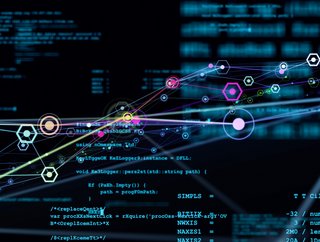Data Language: Solutions using knowledge graphs and AI

Can you tell me about Data Language?
Data Language is a UK-based data innovation product organisation and consultancy which specialises in knowledge graphs and data science. The company founders worked together at the BBC, where we delivered the first large-scale knowledge graph project in UK digital publishing, moving BBC Sport from a classic content-led approach to a data-led platform that could support rapid and continuous innovation. Other media organisations expressed a strong interest in the work we had performed there, and as freelancers, we decided to use the opportunity to launch Data Language.
We started out specialising in knowledge graphs but soon found ourselves being approached by other organisations who were struggling with big data programs that were not delivering the anticipated results. We quickly realised that knowledge graphs could act as the missing filter to separate the signal from noise in big data platforms, allowing meaningful information and insight to be delivered to customers. From that point, we established a complementary data science discipline within the organisation, which quickly became the second pillar of our core competencies.
Since founding the company, we have been very mindful of the rapid rate of evolution within the industry and the speed with which early adopter bespoke consulting solutions quickly become productised and commoditised. Strategically it has always made the most sense for us to be part of that process as the best mitigation to being impacted by it, hence our product division which is the other arm of the organisation. We have found consulting to be one of the best ways of understanding our customers' problems in detail, and where we have seen repeated patterns of problems with no existing market solutions we have used that intelligence to drive our product development investment.
What is your role and responsibilities at the company?
As CTO, my core responsibility is to define, communicate and iterate the technology strategies, architectures and delivery process which allow our commercial strategy and/or our customers’ commercial strategies to be realised with the least overall risk. It is fundamentally collaborative work, and potentially involves working with everyone from customer finance teams to understand revenue models through to developers to get their feedback and insights on the learnings which are critical to evolutionary solution design.
Can you tell me about Data Graphs and how it can benefit customers?
The most valuable asset in any knowledge organisation is the conceptual understanding and insight held collectively amongst the subject matter experts within that organisation: if you are selling information, that is ultimately what your customers are buying. Knowledge graphs allow that conceptual understanding to be modelled collaboratively and explicitly, putting it at the heart of the services which encode how organisations operate, thereby maximising its realised value. Data Graphs is a cloud knowledge graph solution which has been built on the principles of simplicity and optimised user experience to enable users to get up and running with knowledge graphs in minutes.
How can implementing AI help businesses?
Modern organisations are clearly innovating in all sorts of ways. From DAOs innovating their fundamental legal structures to large traditional organisations implementing process optimisation, customer-facing product innovation and innovation in cross-sell and up-sell engagement opportunities. If we are seeing a repeated pattern anywhere, I would say it’s in process optimisation, where companies are using AI to scale their core value stream processes to levels which were completely unachievable previously. Examples might be structured content enrichment in media organisations or structured data annotation of electronic health records in healthcare. Interestingly, this is having much less impact on staffing than might have been feared, as effective and resilient operation still requires a human-in-the-loop component of workflows. Instead, what we are seeing is human expertise being redeployed to solve the most difficult tasks, with AI services picking up everything else. That generally has a lot of overlap with tasks which might previously have been candidates for outsourcing.
What do you see as one of the biggest trends in the technology industry this year?
First and foremost, I expect to see an Increased adoption of knowledge graphs as more and more organisations realise that a detailed understanding of their domain is their most fundamental critical success factor. Secondly, I expect to see an increase in service orientation that is defined in terms of true adaptability: i.e. the ability of lean organisations to swap out core business functions with inhouse, outsourced, human and machine agent solutions at negligible cost in order to keep diligently focussed on their market differentiators and revenue streams. Lastly, 2022 will be the beginning of a consolidation in the Web3 space as some of the noisiest participants fall away and some of the most interesting areas gain wider recognition.
What can we expect from Data Language in 2022?
Our ambition is to be the go-to vendor for knowledge graphs and AI products that enable global brands to leap ahead of the competition. You can also expect to see us continuing to expand our partnerships in the months and years to come.






